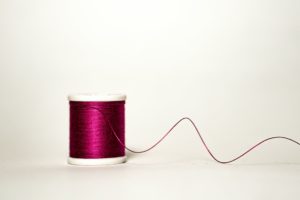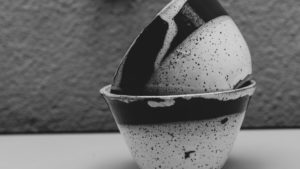I am fortunate in a sense that of all the challenges HS presents me with, my scars are not one of them. I accepted a long time ago that I was never going to have blemish-free skin. That is if such a thing exists at all. I don’t see my scars as ugly but not necessarily beautiful either. They are just marks on my body, like freckles. And when they change, I take it as a heads up that I am about to have a flare-up. An early warning sign if you will. It’s time to change our perspective on hidradenitis suppurativa scars.
My Hidradenitis Suppurativa Scars
I know that my scars are not as troublesome as other people’s scars. And I know acceptance can be a difficult thing to do. I also know that progression is a possibility, and my scars may change over time. Yours too, I imagine.
For that reason, I would like to propose a reframing of what scars mean. Our current narrative hinders us. Scars are signs of damage or in some media, monstrous. We must focus on keeping ourselves well, now and in the future. And that means treating ourselves kindly and with compassion for what our bodies go through.
In this post, I will share a science and a philosophical art perspective. These stories about scars are essential and rarely acknowledged. I hope you will take from this the idea that scars are meaningful. And I want you to take control of that meaning.
The Science of Healing

Too often, scars are metaphors for damage. And less so as marks of healing, which is what they are. They illustrate not only that your body went through something painful, but that it has healed from it. Hidradenitis Suppurativa scars mean we are survivors.
Healing is a series of stages. When you are first wounded, you bleed, then that blood clots to prevent germs from getting in. A clear fluid covers the damage, cleaning it and usually a scab form. For those of us with HS, a scab doesn’t always form. Our immune system kicks in and causes inflammation. Those inflammations are lesions on our bodies that eventually break. The purpose of which is to contain and clean out the infection.
After that and in all wounds, white blood cells continue to stave off infection and begin to mend the skin. Red blood cells make collagen that helps build new tissue. The new tissue stitches the edges of the skin together. If the wound is deep, a mark will be leftover, a scar.
That is how you heal. You can’t see or hear it, and you only feel a little of the repair. It’s its own small world just under your skin. Is it not amazing?
The Philosophy & Art of Repair

In Japanese ceramics, there is a craft called Kintsugi. Kintsugi means “joining together with gold.” The art takes broken pottery and repairs it with lacquer and gold powder. The cracks are not hidden but illuminated brighter so that they become a part of the piece. The Zen Buddhist philosophy of the craft says that breaks happen in life, but they can also heal. And the piece is stronger for it. It is a beautiful metaphor for healing, scars and all.
You see your scars are not flaws but part of your body, your skin and your history. In western culture, when something is broken, we throw it away and buy a new one. I think lots of people wish they could do that with their bodies. I do too sometimes, but part of being in the world is that the world is part of you. It will leave its mark. People decide what the meaning of the mark is.
Kintsugi is not about beauty or even decoration, its about respect. The fact that something has been broken does not mean it is not worthy of attention nor admiration. It doesn’t mean that it can’t be repaired, it will never be the same, but that is what makes it unique. The fault lines are not cracking but marks of resilience.
Now it’s your Turn
Looking at scars in this way will work for some and not for others. It will work best with other strategies around building resilience and improving self-esteem. HidraWear has plenty of articles that can help you with that.
I would like to stress that what I am suggesting is not intended as a cure-all. Nor a dismissal of anybody’s experience. The challenges of living with scars impact everyone differently. Nevertheless, we must live with them. What I am proposing is to change the idea of scars as flaws or villainous, to strength and resilience.
Our ideas about beauty and scarring come from stories about how we think things are. Ultimately, stories are about meaning. Your scars are not anything other than your bodies intelligent repair service. The meaning of them is what you or others have imbued them with. Not an objective truth. And you can tell another story. This also shows that in times of insecurity, you can always turn to science and art for guidance.
About the Author

Shannon Sweeney is a psychology and sociology student from Ireland. She is also living with HS and has a keen interest in lifestyle, wellbeing, and Hidradenitis Suppurativa.


